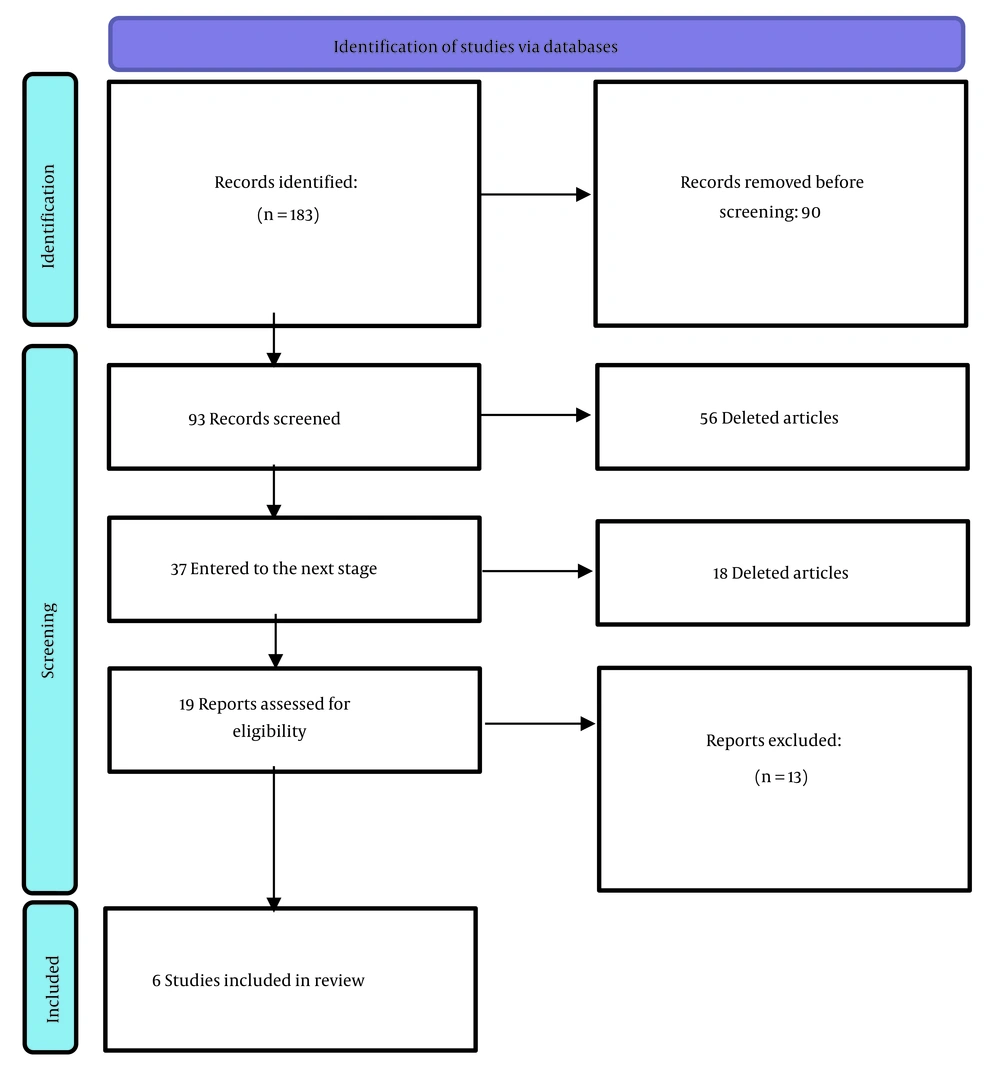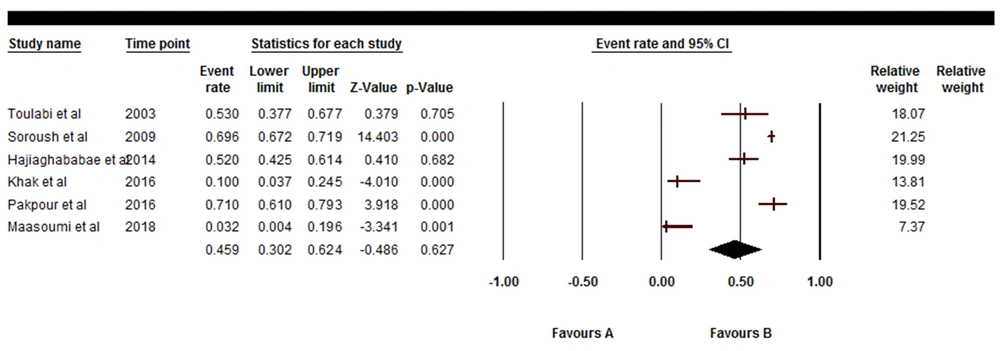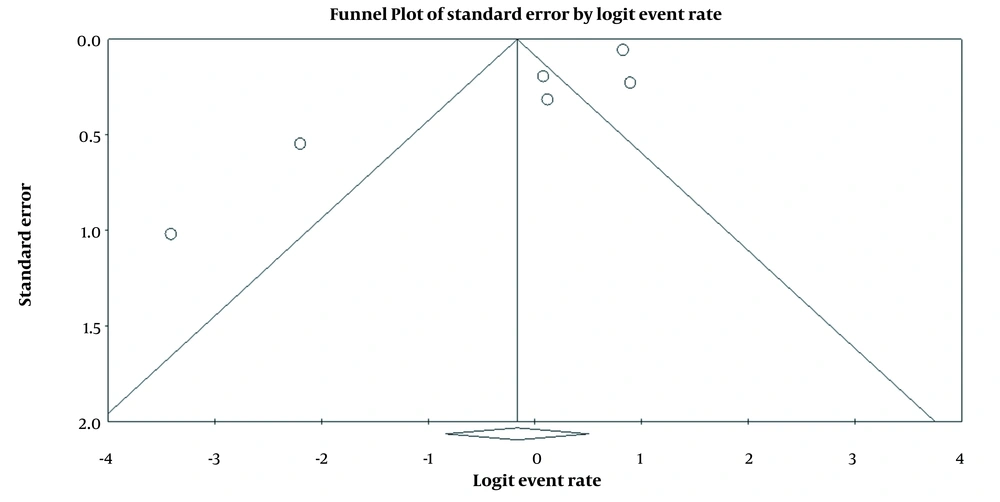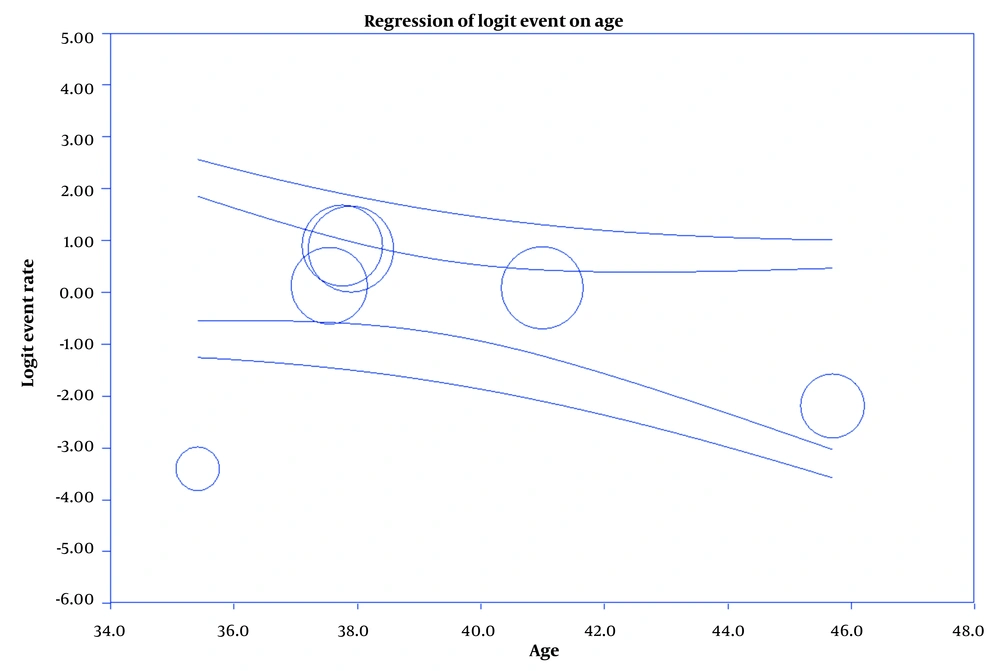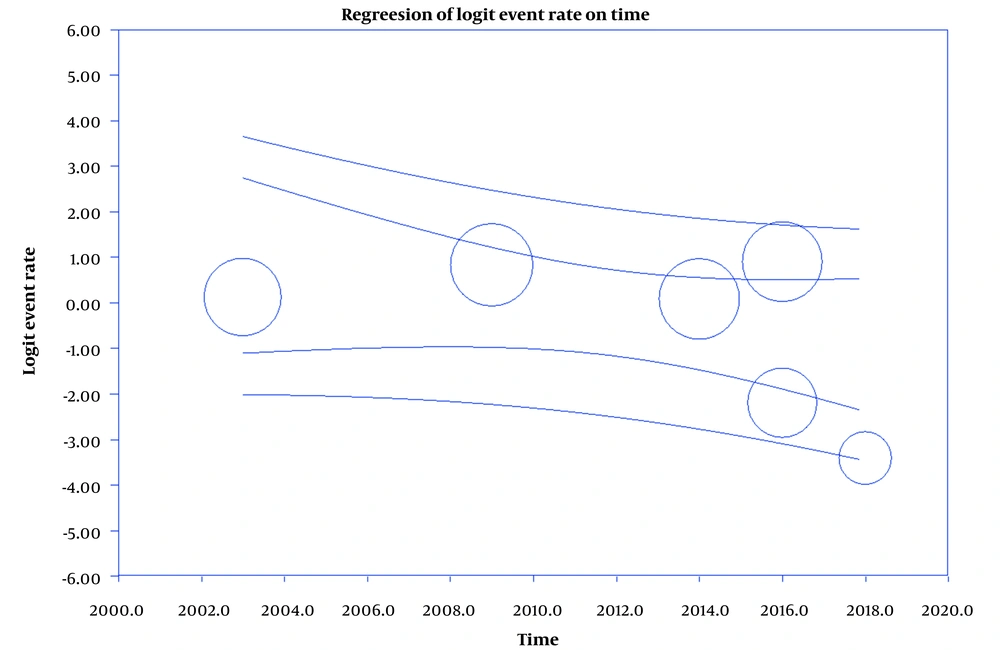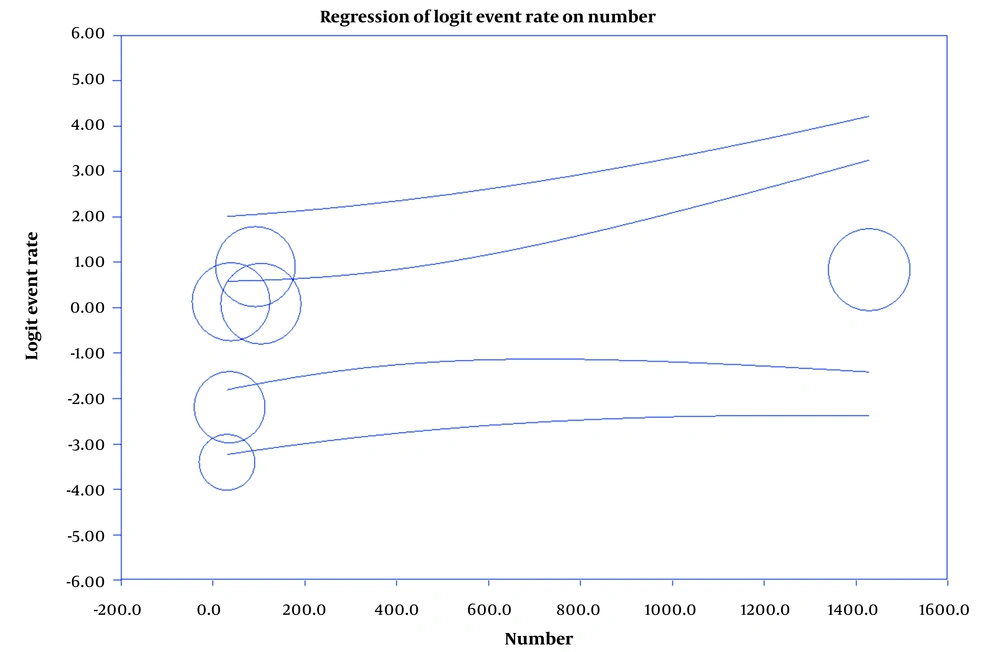1. Context
Human has different and diverse biological needs, among which sexual instinct is deeply mixed with psychological needs. So these needs affect many aspects of life and have an undeniable effect on marital life and its stability (1, 2). Marriage is a social phenomenon in which two people live together. Over time, their personality, abilities, and capabilities are improved, and proper sexual satisfaction is achieved (3). In fact, marital conflicts are destructive risk factors for functional disorders and psychological pathologies that easily affect the life of couples (4, 5).
Various factors, including biological characteristics, religion, interpersonal-social relations, and personal beliefs and convictions, affect sexual function (SF) and relations. In fact, the interaction between nervous, vascular, and hormonal factors causes proper sexual health (SH) (6-8). Sexual health indicates an individual’s level of satisfaction with sexual relations and the ability to create mutual pleasure. So the lack of SH can be considered a physical disorder and/or a mental disorder, which affects various factors affecting health (9, 10).
Sexual dysfunction (SD) may lead to the disturbance in patients’ self-esteem and quality of life, and psychological disorders, such as stress, anxiety, and depression (11), and factors such as body mass index (BMI) and body image of the individual are effective (12). In a study by Van Overmeire et al. on women with fibromyalgia and patients with sexual dysfunction, a high prevalence of depression was reported (11). Also, in a study by Mosallanezhad et al. in Iran on a group of women of reproductive age, it was shown that obesity and weight gain are negative factors in the direction of women’s sexual satisfaction and quality of life and the sexual satisfaction of these people reduced with their weight gain (13).
Over time and given the changes in the patient, the sexual desires and behaviors change and can cause disturbance in the quality of life of the individual. One of the changes that occur in a person and lead to a change in the patient’s sexual desire is chronic diseases, including spinal cord injury (SCI) (14-16). Spinal cord injury is a chronic disease, and the complications of which include disturbance in the patient’s daily activities, the experience of pain and disability, and reduction in social participation (17-19). Spinal cord injury is another side effect of SCI that these patients may experience, from mild to severe. Due to the complications caused by SCI, sexual dysfunction can become a major problem (20, 21).
2. Objectives
This study aimed to evaluate the epidemiology of SD in patients with SCI in Iran by a systematic review and meta-analysis.
3. Methods
In the present systematic review and meta-analysis, using the keywords “spinal cord injury”, “sexual dysfunction”, and “Iran” a list of related articles were extracted from national and international databases. The search was conducted by two researchers in the national databases (SID, Magiran, and Irandoc) and international databases (Web of Science, PubMed, and Scopus).
The scope of the search was during 2001 - 2022, and all Persian and English articles published in the field of sexual satisfaction of patients with SCI in Iran were included in the study. The necessary data were collected using a specialized checklist and analyzed using CMA v.2.0 software.
4. Results
According to Figure 1, 183 articles were extracted in the initial search, and after reviewing the articles, six articles were included in the systematic review and meta-analysis (Figure 1). Table 1 shows the characteristics of the articles included in the systematic review and meta-analysis (Table 1).
| Author | Years | N | Age, y | Duration of Illness | Place | Sexual Dysfunction | Type of Disease | Result |
|---|---|---|---|---|---|---|---|---|
| Maasoumi et al. (22) | 2018 | 31 women | 35.42 (6.51) | 36.32 (19.21) months | Tehran | 3.2 | 23 (74.2%) patients had SCI due to traffic accidents, 6 (19.3%) patients had SCI due to falling, and 2 (6.5%) patients had SCI due to surgical complications. | For the female sexual function index (FSFI), Mean ± SD of desire score is 3.89 ± 1.56, 7.90 ± 3.31 for arousal score, 7.36±3.05 for lubrication score, 9.20 ± 1.82 for satisfaction score, 6.12±2.04 for orgasm score and 5.76 ± 2.66 for pain score. |
| Khak et al. (23) | 2016 | 37 men | 45.7 (6.5) | 24.7 (6.2) | Tehran | 100 | 3 (8.1%) patients had Motor Vehicle Collision (MVC), 14 (37.8%) patients had missile, 2 (5.4%) patients had falling, 15 (40.5%) patients had MSF, and 3 (8.1%) patients had blast injury. | 10 (27%) patients had mild erectile dysfunction (ED), 6 (16.2%) patients had mild to moderate ED, 11 (29.7%) patients had moderate ED, and 10 (27%) patients had severe ED. |
| Toulabi et al. (24) | 2003 | 40 men | 37.55 | - | Lorestan | 53 | Spinal cord amputation veterans | For complications, 57.5% of patients had genital problems, 65% had urinary problems, and 82.5% had muscle pain. Also, 87.5% of the patients walked with the help of a wheelchair, and 12.5% with a cane. |
| Soroush et al. (25) | 2009 | 1429 men | 37.9 (8.5) | 14.6 (2.9) | Whole country | 69.6 | Spinal cord amputation veterans | The level of satisfaction with marital relationship was reported to be excellent in 8% of veterans, good in 49%, average in 33%, and 10% were dissatisfied. |
| Hajiaghababae et al. (26) | 2014 | 105 women | 41 (10.1) | - | Tehran | 87.6 | 9 (8.6%) patients were injured due to fall, 12 (11.4%) patients were injured due to the impact of objects on the body, and 84 (80%) patients were injured due to traffic accidents. | For the FSFI, Mean ± SD of desire score is 2.36 ± 0.70, 2.09 ± 0.64 for arousal score, 2.56 ± 0.82 for lubrication score, 2.35 ± 1.06 for orgasm score, 2.78±1.03 for satisfaction score and 4.45±1.53 for pain score. |
| Pakpour et al. (27) | 2016 | 93 men | 37.76 (9.2) | 4.6 (6.5) years | Tehran | 71 | - | 13 (14%) patients had mild ED, 7 (7.7%) patients had moderate ED, and 8 (41%) patients had severe ED. |
Demographic characteristics of the patients.
According to the findings presented in Figure 2, the prevalence of SD in patients with SCI was equal to 45.9%, 95% (CI: 30.2 - 62.4). Figure 3 shows the publication bias in the study. Figures 4 - 6 show the meta-regression status of the number of patients, the average age of the patients, and the year of publication of the articles. According to the findings, there was no relationship between the mentioned items and the state of SD.
5. Discussion
Chronic diseases affect all aspects of health, including the physical, mental, and spiritual health of patients (28-31). After spinal cord injury, different sexual changes occur in the patient, including the quantity and quality of sexual intercourse and/or even fertility, which may have direct and indirect effects on the quality of life of the patient (32). Given the importance of SD in patients, this study was conducted to determine the prevalence of SD in patients with SCI in Iran.
In a meta-analysis by Pontiroli et al. on 3,168 patients with diabetes, the prevalence of FSFI was (- 0.27 [- 0.41, - 0.12]) in patients with type 1 diabetes (33). In a meta-analysis by McCool et al. on 9,290 postmenopausal women, FSD was reported as 40.9% (34). According to the results of the above studies, the prevalence of SD in women, especially women with chronic diseases, has been reported to be high, which is consistent with the results of this meta-analysis.
The results showed that the prevalence of SD in patients with SCI was equal to 45.9%, 95% (CI: 30.2 - 62.4). In the meta-analysis by Navaneethan et al. on patients with chronic kidney diseases (CKD), the total prevalence of erectile dysfunction (ED) in men was equal to 70% (35). In the meta-analysis by Dong et al., with a sample size of 36,744 patients, the total prevalence of ED in patients with heart diseases was equal to 1.8% (36). In a study by Keskin et al. on patients with CKD, the mean score of ED was 5.51 (2.84) (37). The results of the above studies that are consistent with the present study indicate the presence of sexual disorders in patients with chronic diseases.
In a study by Deforge et al. on a group of patients with SCI, the prevalence of ED in men was reported to be high (38). In a meta-analysis by Chochina et al. on 23 articles with a sample size of 713 patients, the prevalence of ED was reported in 88% (39). In a study by Ferreiro-Velasco et al., the prevalence of sexual dissatisfaction after injury was 38% (40). In a study by Akman et al. in Turkey on 47 patients with SCI, 61.7% of patients had ED (41), which is consistent with the results of the present study.
5.1. Conclusions
The prevalence of SD and sexual dissatisfaction in patients with SCI was reported to be high. For this reason, it is suggested to do necessary interventions to improve the sexual satisfaction of these patients.
